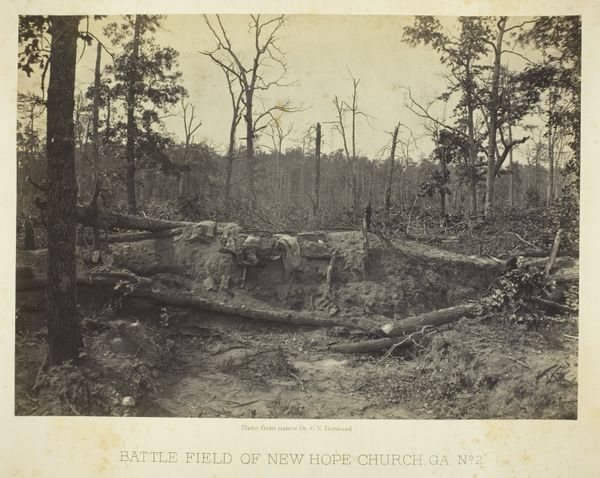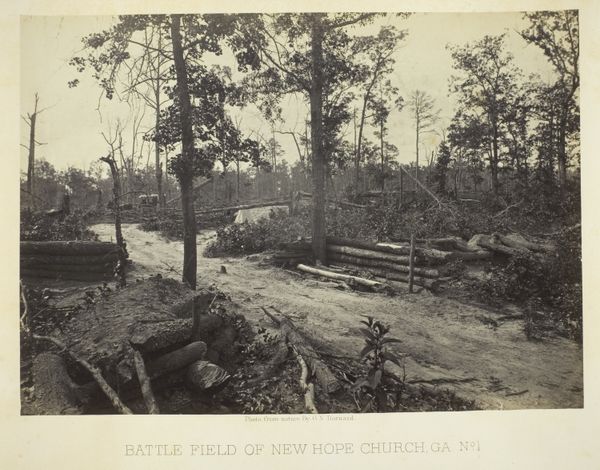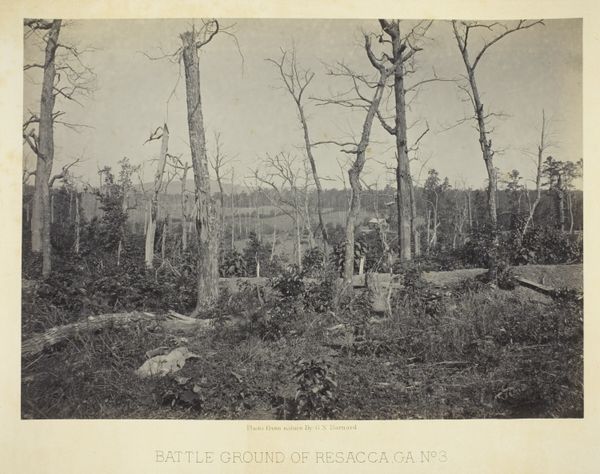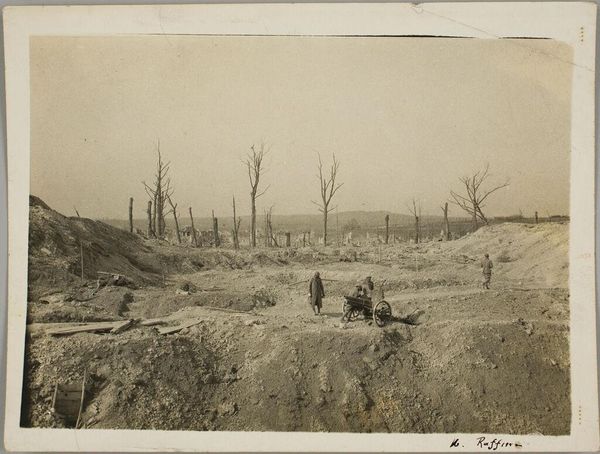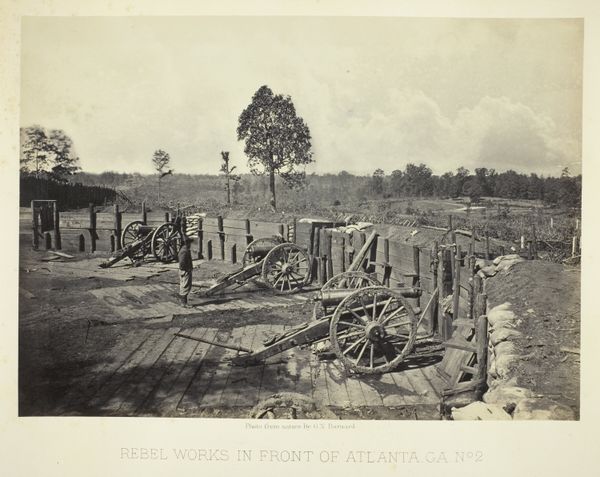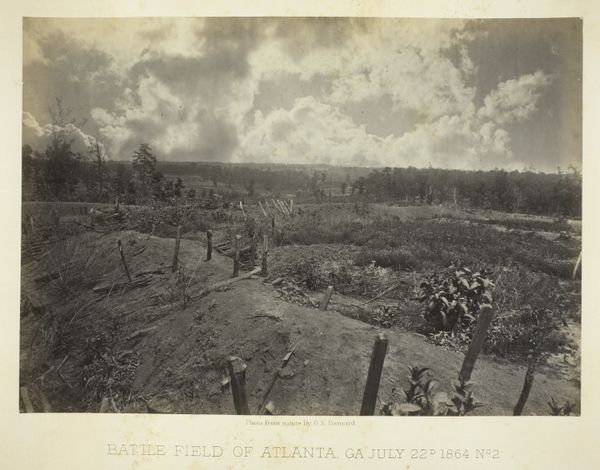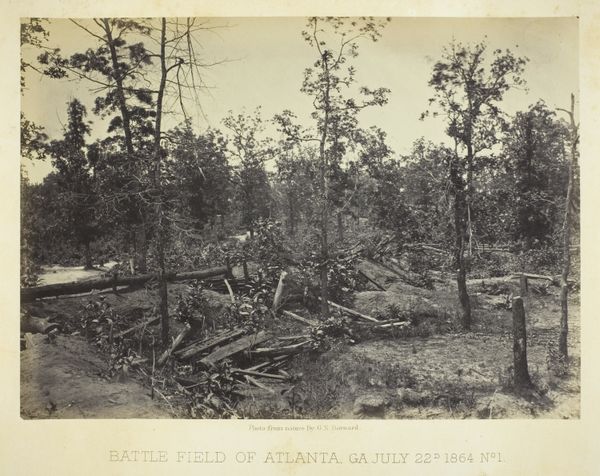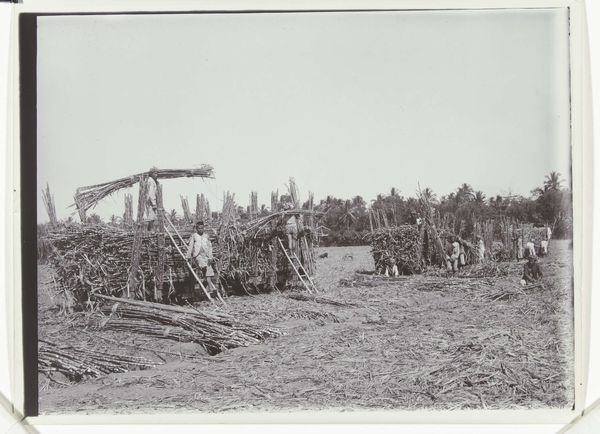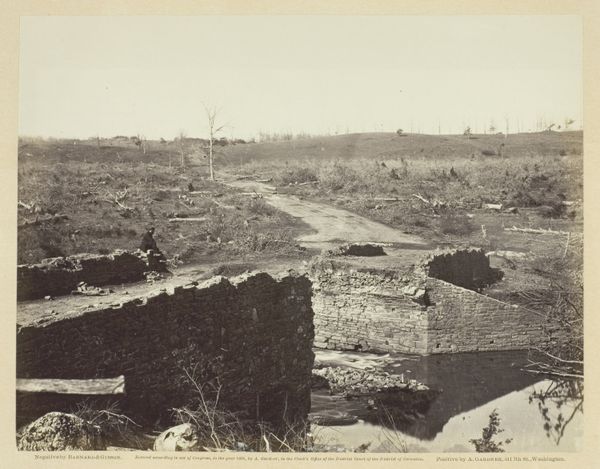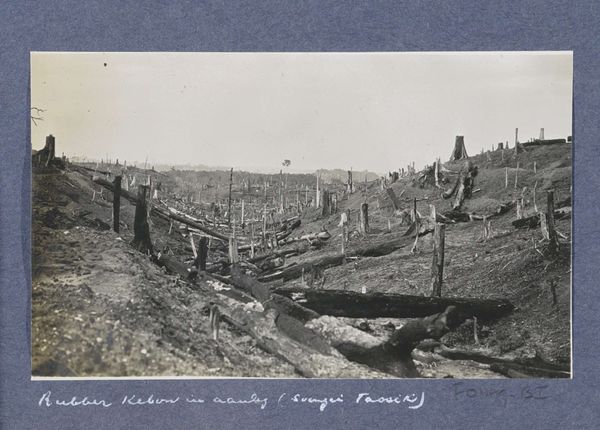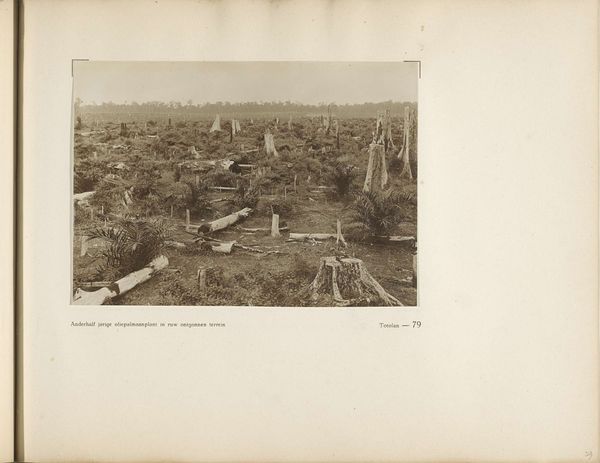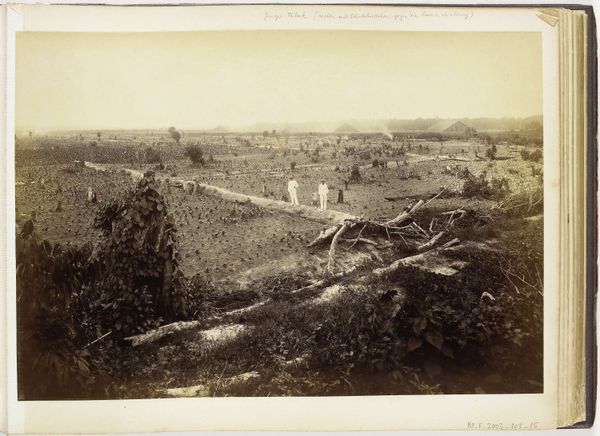
print, photography, gelatin-silver-print
#
16_19th-century
# print
#
war
#
landscape
#
photography
#
gelatin-silver-print
#
men
#
united-states
#
history-painting
#
realism
Dimensions: 25.4 × 35.7 cm (image/paper); 41 × 50.8 cm (album page)
Copyright: Public Domain
Curator: Looking at this photograph, "The Battle Field of Peach Tree Creek, Ga." by George N. Barnard, taken between 1864 and 1866, I'm struck by its stark emptiness. There's a quiet stillness despite the knowledge of the violent events that occurred here during the American Civil War. The photograph feels drained of vitality, mirroring perhaps the societal trauma of the period. Editor: Yes, that sense of stillness is immediate. But what's most compelling is the imagery of fractured wooden fences dominating the foreground—symbols of division, shattered promises. Fences are supposed to delineate boundaries, offer protection; here they’re splintered, useless. And even the leafless tree in the corner carries a somber note. It suggests winter, even death. Curator: Exactly. The very landscape serves as a character, silently bearing witness to the violence. We see the scars of war etched into the environment, highlighting the complex relationship between conflict, land, and memory. This intersection, this visible damage inflicted during the Civil War, raises crucial questions about whose histories are privileged, and at whose expense such narratives are constructed. Editor: Note the horizon line as well. It almost feels like a stage backdrop, distant and unyielding, against which this drama of destruction was played. And look at how Barnard uses the gradation of tones, that silver gelatin print, creating this mood of desolation, with all these variations of gray echoing a spiritual exhaustion. You almost get this sense of haunted terrain, not of heroes. Curator: Right, it pushes against romantic notions of warfare by revealing a realism marked with absence. There aren’t glorious battles or triumphant victors—just aftermath. So Barnard subtly challenges dominant historical narratives through what he chooses to exclude. By omitting human figures, we must consider what is not represented in the retelling of such histories. It makes a subtle statement about power dynamics during the war period, and for whose perspective history is produced and circulated. Editor: Absolutely. The power isn’t necessarily in the depiction, but the conscious void. It evokes a potent understanding of conflict in this land, a quiet disruption to simplistic historical glorification that truly resonates, even now. It prompts contemplation on conflict's lasting scars beyond its immediate violence.
Comments
No comments
Be the first to comment and join the conversation on the ultimate creative platform.
